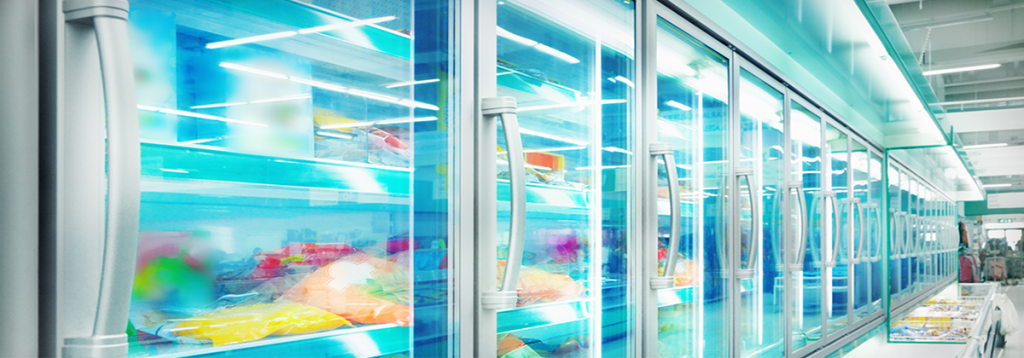New research shows that our society is only four years away from keeping the global average temperature of rising to no more than 1.5C. Reductions of CO2 through measures such as the phasing out of chemical refrigerants are necessary. Thankfully, much progress has been made by the global consumer goods industry in transitioning away from fluorinated gases in refrigeration since we published our first Refrigeration Resolution in 2010. This progress was reflected in our revised resolution on refrigeration, published in October 2016, and our first-ever, member-led Refrigeration Case Studies Booklet.
From the policy perspective, we now have incredible momentum. The success of COP 21 and the Paris Agreement gave energy and a final push to achieve consensus for an amendment of the Montreal Protocol. Under the amendment, countries have committed to cut the production and consumption of hydrofluorocarbons (HFCs) by more than 80% over the next 30 years. Most developing countries will freeze consumption in 2024 (with a small number of developing countries with unique circumstances) freezing consumption in 2028. The plan also provides financing to certain nations, to help them transition to climate-friendly alternatives.
However, while there are several shining examples of success in the use of natural refrigerants (NRs) within the consumer goods sector – Coca-Cola moving to 100% CO2 refrigeration in its vending machines worldwide, Carrefour transitioning 170 stores to NRs, including in warmer climates – it’s clear that much work is still necessary. Worldwide, commercial and light-commercial refrigeration is still dominated by the use of HFCs and hydrochlorofluorocarbons (HCFCs). So, what is the current state of the industry, what are the barriers to further progress and what more can CGF do to align its members with best practice?
With commercial refrigeration making up around 40% of the world’s HFC use, switching to natural refrigerants has huge potential benefits for the environment. As technology continually improves, NR systems are also increasingly offering significant cost benefits over HFCs and HCFCs. This is due to less leakage, lower maintenance requirements and better energy efficiency. As commercial refrigeration represents 30-60% of supermarkets’ total energy demand, employing NR technology can also offer companies a clear bottom-line advantage. Although many retailers have begun using NRs, progress among our members has been mixed. Ahead of our 2017 Global Summit in Berlin, there are still members to whom refrigeration is relevant that have not yet made a public commitment to phase down HFCs.
European leadership – North America in need for a push to NRs
Europe currently leads the way for the switch away from fluorinated gases. A survey of north European supermarkets found 65% had started implementing NR technology. Research from market analyst shecco showed greater than 8,700 European supermarket/food stores using transcritical CO2 systems – more than three times the number in 2013. One of the main drivers of Europe’s switch to NRs is legislation, namely the 2014 EU F-Gas Regulation. The regulation sets dates from which HFCs with specific GWPs will no longer be allowed to be placed on the market. This has had the effect of rapidly reducing the amount of HFCs placed on the market from 2015.
A combination of policies that improve the business case for NRs coupled with innovations in technology are helping to fuel a surge in NR take-up in light commercial refrigeration in the US, Canada and Mexico. There are various elements to policy in North America pushing the industry towards NRs, as well as an accelerated phase down of HCFCs. The US Environmental Protection Agency’s (EPA) Significant New Alternatives Policy (SNAP) Program has sanctioned the use of a wide range of NRs and banned other high-GWP refrigerants. The US Department of Energy has also recently released tougher energy efficiency standards for commercial refrigeration, which it hopes will help cut carbon emissions by more than 140m tonnes over the next 30 years. Some individual regions are also pursuing their own local policies to help promote the take-up of NRs. These include California, which is considering offering financial incentives for organisations that switch to new, low-GWP commercial refrigeration.
Other notable initiatives include the US EPA’s GreenChill partnership, which helps food retailers to reduce their refrigerant gasses emissions. The CGF was featured on the February webinar that provided a great opportunity to address GreenChill’s network in the US on the challenges of phasing down synthetic refrigerants within our membership and beyond.
Asia: potential in China and Japan
Despite HFCs (75%) and HCFCs (62%) still being the dominant refrigerants used in China, shecco’s recent research suggests the country has the potential to be a major market supplier and user of NRs between now and 2020. As in other territories, leadership from policymakers has been key to prompting a take-up of NRs. Critically, China has relaxed its long-held opposition to the Montreal Protocol’s aim of reducing global HFC use, and has agreed to eliminate the production of HCFCs by 2030. China’s revised Environmental Protection Law imposes unlimited financial penalties for polluters. Clearly, there is an opportunity for China to switch from HCFCs straight to NRs.
Japan has seen huge growth in the use of NRs in the light-commercial sector. With Japan boasting the highest number of beverage vending machines per capita in the world, its use of NRs should have positive ramifications for the light-commercial market worldwide. Another Japanese success story is in the number of food retailers, including some supermarkets and other smaller outlets, using CO2 transcritical systems. The number of stores has rocketed to more than 1,800 today.
Harnessing the power of multinationals
There is huge scope for international companies to accelerate take-up of NRs in multiple territories by setting policies at a global level. For example, Coca-Cola, Red Bull and Unilever (all members of the Refrigerants, Naturally! initiative) have committed to eliminating HFCs from their vending and cooler machines across the globe. This has boosted take-up of NR equipment in places where progress might otherwise have been much slower. Similarly, European supermarket chains Tesco and Metro (also active CGF members) have introduced CO2 refrigeration in their stores in China after first successfully employing the technology in their core market of Europe.
There is an opportunity for CGF’s members to adopt this approach more universally.
Natural refrigerant supply challenges
NRs are some of the longest-used refrigerants in the world, some dating back to the 19th century. Ammonia, for example, has been widely used in large-scale industrial refrigeration systems in many countries for several decades. As in many markets, supply of NRs are (and will be) to a large extent a function of demand. As refrigeration markets around the world inevitably move – albeit at different speeds – towards the use of lower-GWP gases, refrigerant suppliers will have to scale up their production of NRs.
Specific types of NR have their own production characteristics and challenges. Ammonia and CO2, for example, are widely available and produced in many global locations. However, the local purity of these gases may sometimes be lower than recommended for their R717/R744 (respectively) refrigerant versions. In such scenarios, purification or importing are both expensive solutions. Hydrocarbons (HCs) are mostly generated as a byproduct of natural gas processing and petroleum refining. However, there are currently few sources of many HCs and even fewer companies that can purify them to the required specification for refrigeration. Some original equipment manufacturers (OEMs), meanwhile, warn that the phasing-down of fluorinated gases, coupled with regulations on charge limits for alternative refrigerants, will create supply problems.
In an attempt to head-off this potential supply bottleneck, other OEMs are campaigning for NR charge standards to be amended. For example, in February 2016, UK-based Carter Retail Equipment submitted an application to the US EPA to increase the maximum charge of the HC propane permitted in food/commercial retail refrigeration standalone equipment from 150g to 1kg.
Many commentators argue that the best way of ensuring adequate supply of NRs – which will in turn ensure a downward pressure on price – will be to create sufficient demand from end-users.
Collaboration between end-users and refrigerant manufacturers can lead to new – greener and cheaper – supply streams. For example, UK supermarket chain Sainsbury’s is currently piloting the use of the “eCO2” refrigerant in one of its stores. eCO2, produced by suppliers A-Gas, is made from a byproduct of the bioethanol production of sugar beet supplied by the manufacturers that make sugar for Sainsbury’s supermarkets. This contrasts with the often far higher emitting industrial processes that are used in much CO2 refrigerant production. There is clearly scope for the CGF to encourage its members to explore new and greener means of refrigerant supply, such as eCO2. Wherever possible, retailers should be encouraged to use the principles of the circular economy to extract value from all the products in their supply chain.
Next steps – the transition challenge
As well as the supply issues already considered, there are a number of challenges that the consumer goods industry faces in enabling the switch to NRs.
Safety standards. In many jurisdictions around the world, the take-up of NRs is hampered by standards that prevent or limit their use (eg, the regulations limiting HC charge in certain commercial refrigeration equipment to 150g, as noted above). Many of these regulations are predicated on safety concerns around the use of NRs. If not used in the appropriate way, HCs are flammable, while ammonia can be toxic. CO2 installations, meanwhile, operate at high pressures. However, standards differ in different jurisdictions. Regulations will be altered in the near future, driven by pressure on policymakers from multinational companies who want to pursue the NR pathway.
Lack of technical expertise. Many commentators bemoan a lack of available technical expertise and training in using and maintaining NR technology in certain territories of the global refrigeration industry. However, as take-up of NR systems has increased, technical knowledge has certainly improved, with many more training programmes for NR available today than a few years ago.
Many operators now also offer in-house training. The US, Canada and Mexico are committed to a global phase down of HFCs. In 2016, they again (for the eighth consecutive time) tabled a proposal to phase down HFCs under the Montreal Protocol. To date, a number of developing countries have blocked the proposal, citing concerns about cost, legalities and technical issues.
Next steps for the CGF
Following the announcement of the CGF’s second refrigeration Resolution in 2016, there is clearly much more transition work to be done – and more the CGF itself can do.
Through the canvassing of expert industry opinions, the key points to emerge of how the CGF can help move the industry further towards best practice in refrigeration include:
- CGF members becoming more vocal on their HFC phase-out plans and progress.
- Encouraging information-sharing among CGF members about the safety and cost issues associated with NRs.
- Initiating and coordinating collaborative research, tests and pilot projects on the use of NRs to boost global demand for and supply of NRs.
- Working with members to remove barriers to NRs, including revising national and regional standards to allow more widespread use of NRs.
- Increasing the dissemination of knowledge about NRs, through, for example, technical and policy webinars, case studies, workshops, papers and online materials.
There is clear scope for companies to be more ambitious in phasing out harmful chemical refrigerants and move to natural alternatives. There are environmental and economic benefits from the switch, but initial investment costs are proving to be a challenge, as are some legislative frameworks that favour – perhaps inadvertently – existing technology over innovation.
An HFC phase-down could prevent warming of up to 0.1°C by 2050 and 0.5°C by 2100, offering one of the most cost effective climate mitigation strategies available in the world TODAY!!!

Ignacio Gavilan
Director of Environmental Sustainability
The Consumer Goods Forum


